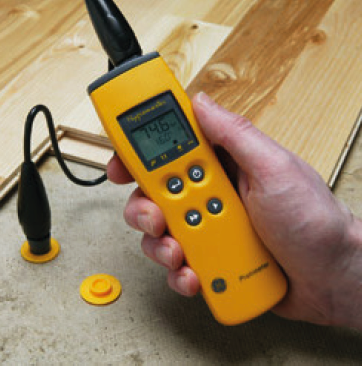Humidity levels can have a significant impact on your health as well as the structures and systems in your home. As an example, high humidity can lead to mildew and black mould, while low humidity can exacerbate conditions such as asthma.
What is humidity?
Humidity is the amount of water vapour in the air and is measured as a percentage. A reading of 0% would be completely dry air, without any water vapour at all, while 100% humidity will often look foggy as water vapour condenses out of the air. Both would be extremely unusual in a home.
What is normal humidity in a UK home?
In the UK, as the seasons change the level of humidity outdoors changes too, so the level indoors will also shift. As a result, it’s common for humidity levels to be between 40-60% indoors, with 50-55% being considered ideal. It may surprise you to know that humidity levels outdoors will normally be higher in summer – this is because warm air can hold more water vapour than cold air. Well sealed houses may show the reverse pattern as less fresh air is brought into the home and this can be the start of a problem.
High humidity
Problems caused by high humidity
High humidity can make your home a breeding ground for bacteria and mould. You may notice that food rots quickly, see mildew on the walls or a grey fuzz on soft furnishings. Condensation on walls or windows may also be common. High humidity can also cause health problems as moulds are often allergens and can trigger asthma and breathing issues. Illnesses spread by bacteria or viruses (from the common cold to cholera) find it easier to spread in warm, humid environments.
How to fix high humidity
High humidity is often caused by poor ventilation, and the solution may be as simple as opening the windows regularly. Many human activities, including breathing, bathing, cooking, and washing dishes, clothes and floors, throw moisture into the air which increases the humidity. Using extractor fans in the kitchen and bathroom, drying laundry outdoors and ventilating your home properly may solve the problem. If not, a dehumidifier machine can be purchased which will collect water out of the air. This is particularly effective where the humidity is unavoidable.
Low humidity
Problems caused by low humidity
Low humidity tends to irritate the eyes, nose and throat and can lead to cold or flu-like symptoms. It may also make you more vulnerable to respiratory diseases and can trigger asthma and other respiratory conditions, particularly when paired with cold. It can also make it harder to feel warm, which can be problematic for vulnerable people including babies and the elderly.
How to fix low humidity
The easiest solution to a low humidity problem is to purchase a humidifier. This is a machine designed to increase the amount of water vapour in the air. It will usually have an effective range indicated on the packaging. Most domestic humidifiers have an effective range of 1-3m and are thus ideal for localized use, such as in the bedroom.
If you would like to test the humidity in your home, get in touch or view our Humidity Calculator (Basic) and Humidity Calculator Pro.

